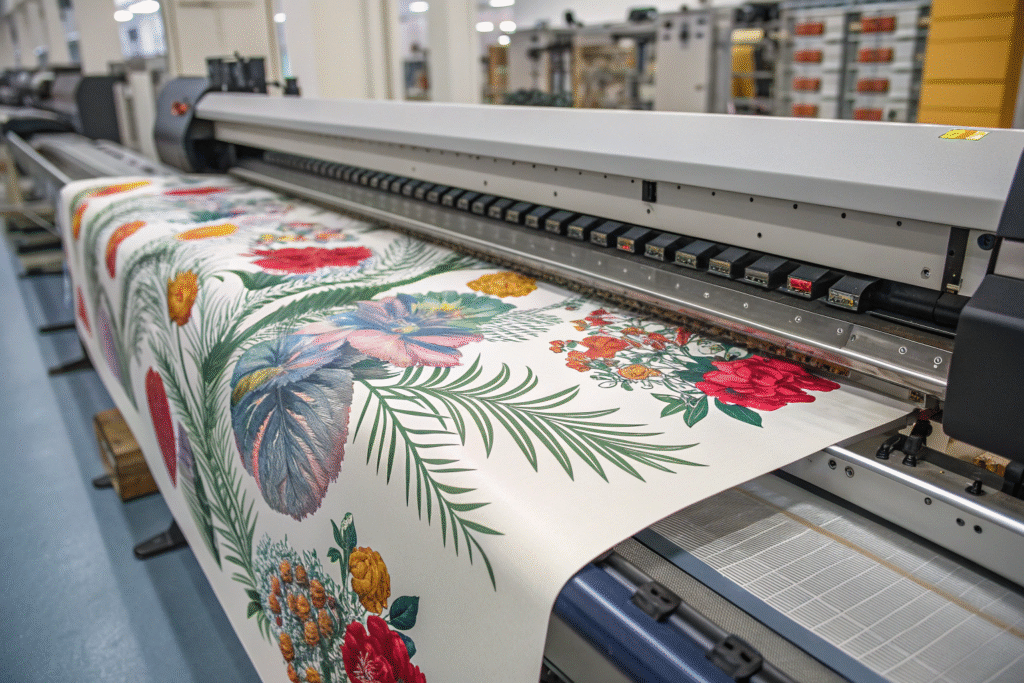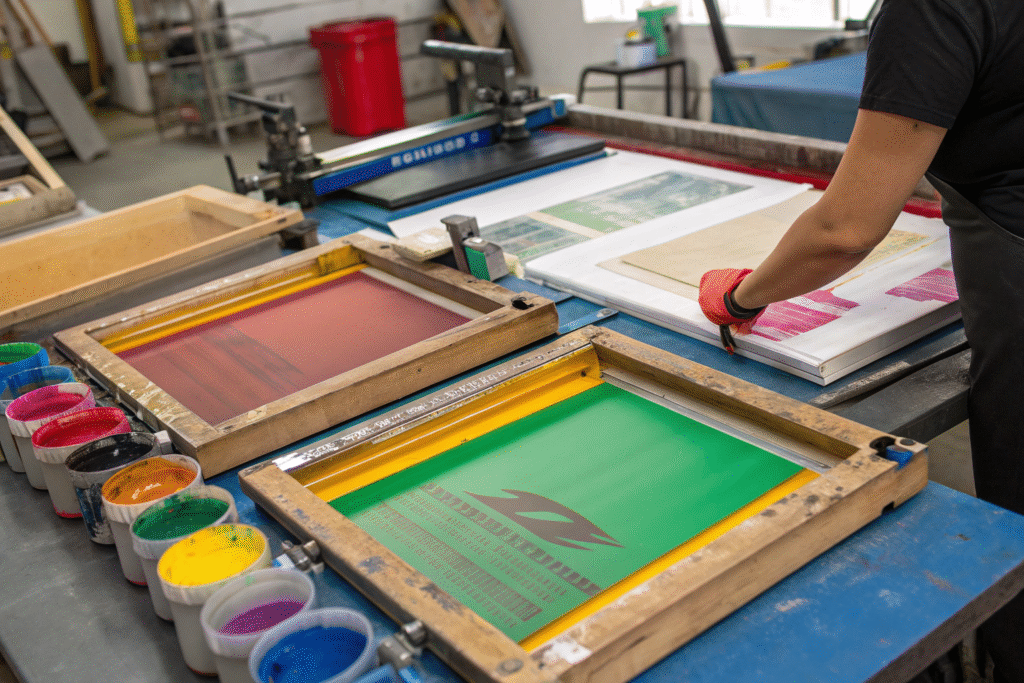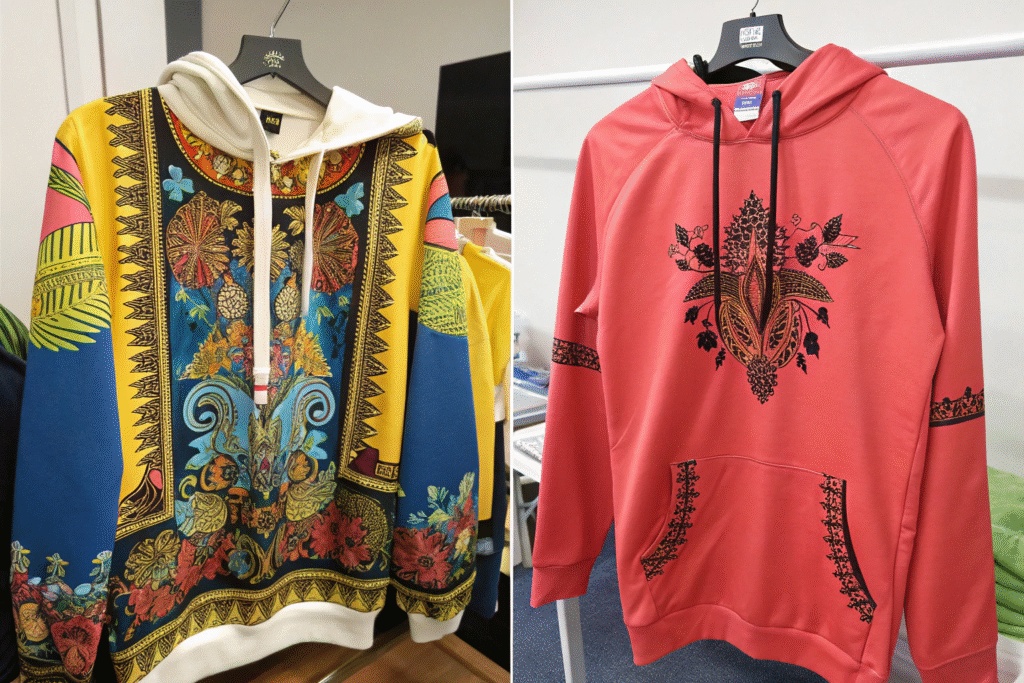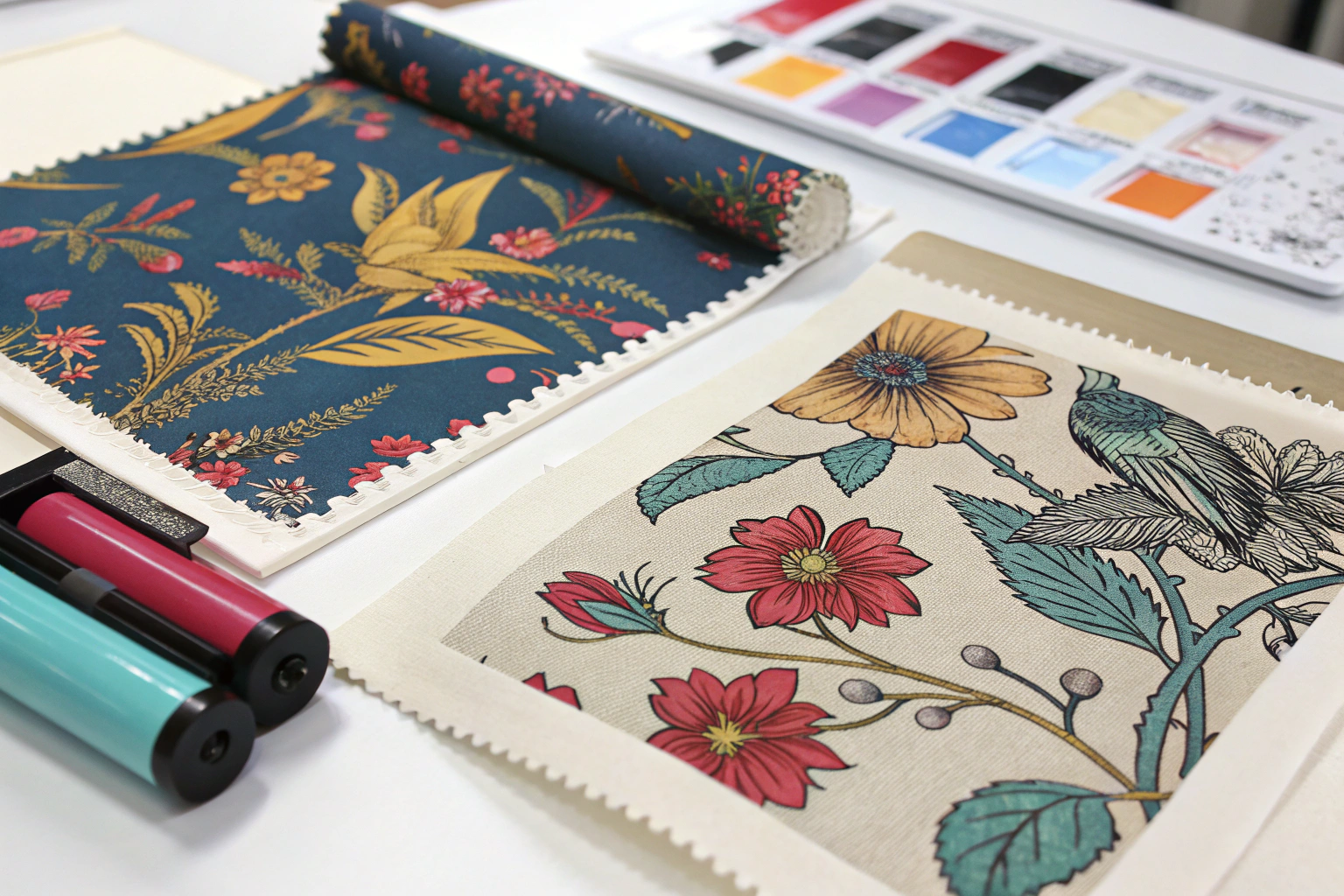When it comes to fabric printing, two popular methods stand out: digital printing and screen printing. While both processes allow for the application of designs on fabric, they differ significantly in terms of technique, cost, quality, and applications. Understanding these differences can help manufacturers and designers select the best printing method for their needs.
Digital printing and screen printing offer distinct advantages and limitations, making them suitable for different types of fabric and design requirements. In this article, we’ll explore the characteristics of both methods, their pros and cons, and which applications are best suited for each.
What is Digital Printing on Fabric?
Digital printing utilizes inkjet technology to apply designs directly onto fabric. This method enables the creation of detailed and high-resolution images with remarkable precision and speed.

How Does Digital Printing Work?
In digital fabric printing, designs are prepared on a computer and then transferred directly to fabric through specialized printers that spray ink onto the material. Unlike traditional methods, there’s no need for stencils or screens, offering a wide range of vibrant colors and intricate patterns.
Advantages of Digital Printing
- High Detail and Precision: Digital printing allows for intricate designs, including photorealistic images, gradients, and complex patterns.
- Shorter Setup Times: There’s no need for screens or stencils, making it ideal for short runs and custom designs.
- Color Variety: A broad spectrum of colors can be achieved, including complex gradients, providing more flexibility.
- No Setup Costs for Small Runs: As there is no need for screen creation, costs are lower for smaller production volumes.
Disadvantages of Digital Printing
- Limited Fabric Types: Digital printing works best on fabrics that absorb ink well, such as cotton or polyester blends. It may not be effective on textured or synthetic fabrics.
- Slower Production for Larger Runs: Digital printing is generally slower than screen printing for larger production runs, which can be a limitation for bulk orders.
What is Screen Printing on Fabric?
Screen printing, or silk-screen printing, is a conventional technique where ink is pressed through a mesh screen onto fabric. Each color in the design requires a separate screen, making it ideal for large-scale production with fewer colors.

How Does Screen Printing Work?
The process begins with transferring the design onto a screen, which is then positioned on the fabric. Ink is forced through the screen using a squeegee, leaving the design on the material. For multi-color designs, each color requires its own screen, with each layer printed one after another.
Advantages of Screen Printing
- Cost-Effective for Large Runs: Once the screens are set up, screen printing is perfect for large volumes with identical designs as the cost per unit decreases with higher production volumes.
- Durability: The ink sits on the fabric’s surface, making it more durable and resistant to fading, even after multiple washes.
- Versatility on Fabrics: Screen printing works well on various fabrics, including cotton, polyester, and even non-textile materials like paper and wood.
Disadvantages of Screen Printing
- Setup Time and Costs: The setup for screen printing can be more time-consuming and costly compared to digital printing, especially for designs with many colors.
- Limited Design Complexity: Due to the need for separate screens for each color, intricate or detailed designs can be challenging and costly to print.
Key Differences Between Digital and Screen Printing
| Feature | Digital Printing | Screen Printing |
|---|---|---|
| Setup Costs | Low setup costs | High setup costs for screens |
| Production Speed | Slower for large volumes | Faster for large volumes |
| Design Detail | High detail and intricate designs | Limited by the number of colors and complexity |
| Color Range | Wide range, including gradients and blends | Limited to the number of screens/colors |
| Best for | Small runs, custom designs, complex patterns | Large runs with simple designs |
| Fabric Types | Works best on cotton, polyester blends | Suitable for various fabrics, including non-textile |

Which Method is Best for Your Fabric?
The choice between digital and screen printing depends largely on the project size, design complexity, and fabric type.
-
Digital Printing is best suited for short-run productions with complex, multicolor designs. It’s ideal for custom items, one-off pieces, or small batches where precision and detail are essential. It also works well with fabrics that have high absorption rates like cotton.
-
Screen Printing is optimal for large-scale productions where the design involves fewer colors and simple graphics. It’s highly effective for bulk production runs and offers durability for products that need to withstand wear and tear, like t-shirts and promotional items.
Conclusion
Both digital printing and screen printing have their unique advantages and drawbacks. Choosing the right method depends on your production needs, design specifications, and budget. For small, intricate designs, digital printing provides high quality and flexibility, while screen printing is the go-to choice for large batches with simpler designs that require durability.
If you are looking for reliable and efficient fabric printing for your production, Shanghai Fumao offers a variety of printing services tailored to your specific needs. Our team can help you decide on the best printing method for your products, ensuring high-quality results every time.
Feel free to reach out to Elaine at elaine@fumaoclothing.com for more information on our fabric printing services.










